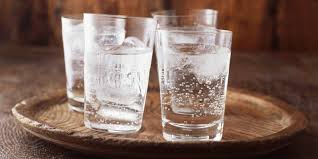
The Role Of Hydration While Managing Pain!
Today, I’m going to be talking about the role of hydration while managing pain. Pain, whether it’s a throbbing headache or the chronic aches of arthritis, affects millions daily. But have you ever wondered if something as simple as drinking water could influence your pain levels? Guess what? It can.
The human body is a complex system that thrives on water for all its functions. From lubricating joints to ensuring proper cellular function, hydration plays a crucial role. Yet, the connection between sipping your way to relief and directly mitigating pain isn’t always clear-cut. It isn’t just about staying hydrated; it’s also about understanding the underlying processes that link hydration to pain mitigation.
This article will delve into the how and why behind the role of water in managing pain. It’s not just about throwing facts and figures at you. I’m here to help you understand the science, implement practical strategies, and recognize how staying hydrated might become a part of your pain management toolkit.
In my opinion, it’s crucial to address pain management from multiple angles, and hydration could be a piece of the puzzle that’s often overlooked. In this piece, we’re going to explore what existing research tells us and how you can apply it to your life. Also, I believe in the power of E-E-A-T—you’ll find expert insights, authoritative sources, and trustworthy advice throughout.
Stay with me as we take a closer look at the scientific insights into hydration and pain in the next section. You’re going to find out about the latest research, understand the role dehydration may play in exacerbating pain, and discover how electrolytes can significantly impact your well-being.

Scientific Insights into Hydration and Pain
Have you ever wondered if something as simple as drinking water could affect your pain levels? Guess what? It can. Research into hydration and its impact on pain has opened new avenues for managing discomfort. I’m here to help you understand just what science has to say about this.
First off, let’s dive into the studies that have examined the relationship between hydration and how we perceive pain. A key observation is that people who report chronic dehydration often experience more intense pain. This isn’t just about a dry throat or feeling thirsty; it’s about how the body’s pain signals can go haywire when fluid levels drop.
Now, what’s the role of dehydration in exacerbating pain symptoms? Think of your body like a well-oiled machine. When it’s low on oil, things start to grind and wear down. Similarly, when we’re low on fluids, our tissues and cells can’t function properly, which might increase the sensitivity to pain. Dehydration can contribute to muscle spasms, headaches, and joint pain, creating an unfriendly environment for nerve function.
Another piece of the puzzle is electrolytes. These charged particles are vital for nerve signaling and muscle contraction. If you’re dehydrated, electrolyte imbalances can occur, leading to cramps, increased pain sensitivity, and other symptoms. It turns out that staying hydrated is key to keeping this intricate system running smoothly.
Lastly, we can’t overlook the role of water in managing inflammation, which is often a culprit behind pain. Hydration can help reduce inflammation, thereby potentially easing pain. By keeping our tissues well hydrated, we can ensure that they remain in good condition, less susceptible to the inflammation that can lead to chronic pain.

Practical Hydration Tips for Pain Sufferers
Now, I’m going to share how you can stay hydrated in a way that may help you manage your pain better. This isn’t just about drinking water – it’s a holistic approach to ensuring your body gets the fluid it needs.
First, let’s talk about how much water you should aim for. Generally speaking, you’ve probably heard the ‘8×8 rule’ – that’s eight 8-ounce glasses each day. While that’s a decent benchmark, the truth is, your water needs can vary based on factors like activity level, climate, and health status.
Recognizing dehydration is crucial, especially because it might be contributing to your pain. Look out for the usual suspects – headaches, dry mouth, dizziness, and extreme thirst. If these ring a bell, ramp up your water intake.
Beyond drinking water, consider hydrating foods. Fruits and vegetables like watermelon, cucumber, and strawberries are packed with water and can be a refreshing way to hit your hydration goals.
Remember, chronic pain can be complex, and what works for one might not work for all. You can always adjust your approach down the road, but try starting with consistent hydration to see if there’s an impact on your pain levels.
Overcoming Barriers to Adequate Hydration
I’m going to help you tackle some of the common challenges you might face in your quest to stay hydrated, especially when managing pain. Believe it or not, drinking enough water isn’t always a walk in the park.
Now, what are these barriers? For starters, you might simply forget to drink water throughout the day, or maybe you’re not a big fan of the taste of plain water. Some people find they’re too busy, or they worry about increased bathroom breaks, which can be a significant inconvenience.
If you’re not used to drinking water regularly, it can be a hard habit to start. But here’s a strategy I like to leverage: Infuse your water with fruit, cucumber, or mint for a flavor boost. Carry a reusable water bottle with you as a reminder to take sips throughout the day.
Hydration isn’t just about guzzling water. It should complement other pain management therapies too. This might include medications, physical therapy, or relaxation techniques. Think of it as one piece of your overall wellness puzzle.
But don’t worry too much about overhauling your lifestyle overnight. You can always adjust your approach down the road. The goal is to build lasting hydration habits. Once these small changes become part of your daily routine, they can make a big difference in your hydration in managing pain strategy.

Conclusion: Personalizing Your Hydration Strategy
You’re going to find out that managing pain isn’t a one-size-fits-all scenario, and the same goes for hydration. Throughout this article, we’ve unpacked the crucial role that proper hydration plays in combating pain. It’s not just about chugging water; it’s about understanding how your body operates and what it needs to thrive.
So my question to you today is, have you considered how your individual hydration needs might impact your pain management plan? Every person’s body is unique, and factors like weight, activity level, climate, and even the type of pain can influence how much water you should be drinking.
I really hope that you’ve grasped the importance of tailoring your hydration approach to your personal circumstances. You’re encouraged to monitor your body’s cues and adjust your hydration levels accordingly. Choose something that resonates with you, and remember, you can always adjust your approach down the road.
While staying hydrated is essential, it’s crucial to keep in touch with healthcare professionals who can help refine your pain management and hydration strategies. They can provide personalized advice that’s based on the latest medical research and your health history.
In closing, I want you to understand that proper hydration can be a simple yet powerful tool in your pain management arsenal. By staying informed and proactive, you’re taking positive steps towards better health. As you continue on this journey, keep in mind that your first attempt doesn’t need to be your last. Start with small, sustainable changes and build from there. Always be kind to yourself and recognize the progress you’re making every day.
Please Visit me on KickStarter!
You can Also visit me at IndieGoGo!
[Disclaimer: Consult a healthcare professional before starting any new pain soothing regimen. “No Youchie” is not intended to diagnose, treat, cure, or prevent any disease illness or injury.]
Click here For Our Other Blog Post lists For Your Reading Pleasure
